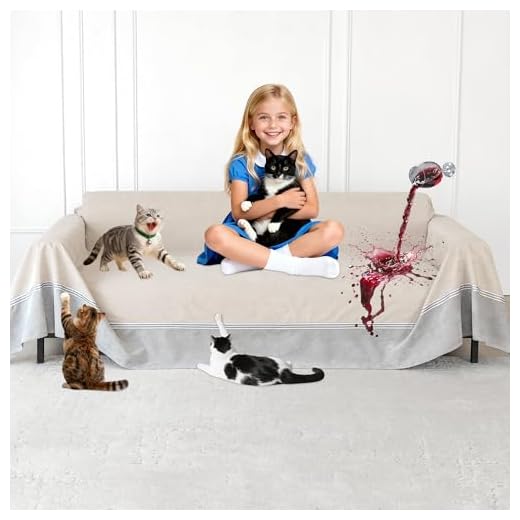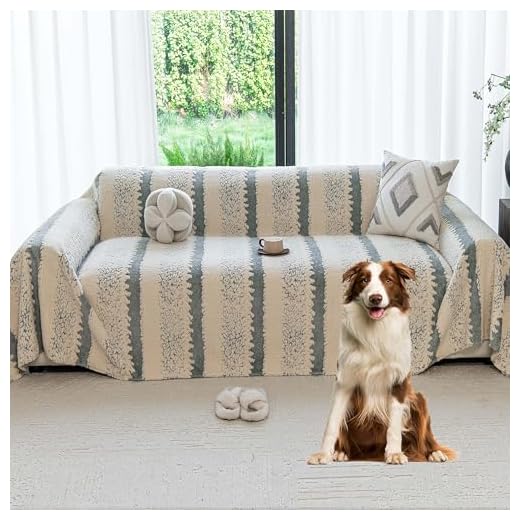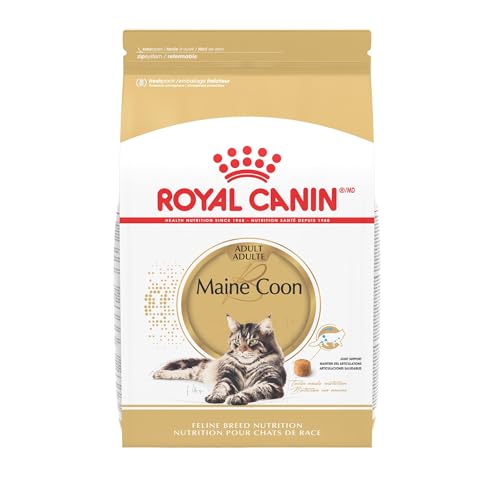



If you’re a pet owner, selecting the right material for your seating area is key to maintaining both comfort and durability. Look for textiles that resist scratching and are easy to clean, ensuring they withstand the playful nature of your furry companions. Fabrics such as microfiber and leather stand out due to their resilience and low maintenance needs.
This article is designed for pet lovers seeking practical advice on upholstery options that can endure the wear and tear caused by their playful pets. By examining various materials, this guide offers insights into what works best in a pet-friendly home, helping you create a stylish yet functional living space.
You will discover the pros and cons of different materials, recommendations for specific brands, and tips on how to care for your furniture to extend its lifespan. Making an informed choice will not only enhance your home’s aesthetics but also ensure a harmonious environment for both you and your beloved animals.
Best Sofa Fabric for Cats with Claws
Choosing the right upholstery can greatly impact the longevity of your furniture when living with felines. Opt for materials that resist snagging and wear, providing a durable solution while maintaining aesthetic appeal.
Microfiber stands out as a strong contender due to its tightly woven fibers. It is not only resistant to scratches but also easy to clean, which is a significant advantage in multi-pet households. Additionally, its soft texture can be comfortable for both humans and pets alike.
Recommended Materials
- Canvas: This fabric is robust and durable, making it less likely to be damaged by claws.
- Denim: Known for its resilience, denim can withstand wear and tear, making it a practical choice.
- Leather: While it may scratch, it is easy to maintain and can be wiped clean, often regaining its appearance over time.
- Crypton: This engineered fabric is stain-resistant and highly durable, making it suitable for active environments.
When selecting upholstery, consider the weave density. Tighter weaves generally offer better protection against tearing. Avoid loose weaves or delicate fabrics, as they are more prone to damage.
Regular maintenance, such as brushing and vacuuming, can also prolong the life of your chosen material. Providing scratching posts nearby may help redirect your pet’s instinct to scratch, safeguarding your furniture further.
Durable Materials That Resist Scratching
Choosing robust textiles can significantly enhance the longevity of your seating while accommodating playful companions. Certain materials excel in resisting damage from sharp claws, ensuring a more durable and visually appealing option.
Microfiber stands out due to its tightly woven fibers, which provide a protective barrier against scratches. This material is not only resistant to tearing but also easy to clean, making it ideal for households with active pets.
Additional Durable Options
Other materials worth considering include:
- Canvas: A heavy-duty option that can withstand wear and tear, canvas is also resistant to stains.
- Leather: Genuine or faux leather offers a sleek appearance and is generally easy to maintain, although it may show scratches more prominently.
- Denim: Known for its durability, denim can handle rough play while providing a casual aesthetic.
- Outdoor Fabrics: Designed to endure harsh conditions, these textiles are often resistant to fading and moisture, making them suitable for indoor use as well.
When selecting a material, consider its weave and finish. Tight weaves tend to resist scratching better than loose ones. Additionally, opting for textured surfaces can help mask any potential damage.
Ultimately, investing in resilient textiles will not only enhance the durability of your seating but also contribute to a more harmonious living space with your furry friends.
Texture and Comfort: What Felines Prefer
Choosing the right upholstery involves understanding the textures that appeal to felines. Cats are naturally inclined to seek out surfaces that are soft yet durable. Fabrics with a slightly coarse texture can provide the necessary friction for scratching, which is instinctual for them.
Fleecy materials or tightly woven fabrics may not only feel pleasant but also satisfy their need for comfort. The warmth and softness of such textiles can attract them, making your seating area their favorite lounging spot.
Preferred Textures
Felines demonstrate a preference for specific textures that cater to their instincts and comfort. Here are some characteristics to consider:
- Softness: Materials that are plush and gentle on paws enhance their lounging experience.
- Durability: Fabrics that withstand scratching are essential to prevent wear and tear.
- Breathability: Textiles that allow air circulation help regulate temperature, keeping them comfortable.
Understanding these preferences can guide you in selecting the right upholstery that caters to both feline instincts and human aesthetics. Incorporating these elements ensures a harmonious living space for both you and your pet.
Easy Maintenance Fabrics for Cat Owners
Choosing materials that resist stains and are easy to clean can significantly enhance the experience of living with a feline companion. Opting for synthetic blends or tightly woven textiles can offer both durability and ease of care, ensuring that your living space remains inviting despite the challenges posed by sharp claws.
Microfiber is a standout option for its resistance to spills and scratches. This material can be easily wiped clean with a damp cloth, making it a practical choice for those who want to maintain a tidy environment. Another excellent choice is canvas, which is robust and can withstand wear. It is also machine washable, allowing for simple maintenance.
Considerations for Your Selection
- Stain Resistance: Look for materials treated with stain-repellent coatings.
- Durability: Choose options with a tight weave to prevent snags.
- Washability: Fabrics that can be cleaned in a machine save time and effort.
In addition to these characteristics, consider colors and patterns that can help hide fur and dirt. Darker shades or busy patterns can be more forgiving than light, solid colors. Incorporating slipcovers can also extend the life of your furniture, allowing for easy replacement or cleaning as needed.
Color and Pattern Choices to Hide Damage
Opting for darker shades and intricate patterns can effectively conceal any marks or scratches. Consider fabrics in hues like navy blue, charcoal gray, or deep forest green, as they tend to mask wear and tear better than lighter colors.
Patterns such as houndstooth, paisley, or abstract designs provide visual interest while helping to camouflage any imperfections. Textured fabrics, like boucle or tweed, can also distract from any potential damage.
- Dark Colors: Navy, charcoal, forest green.
- Intricate Patterns: Houndstooth, paisley, abstract designs.
- Textured Options: Boucle, tweed, or jacquard.
Choosing the right combination of shade and design will enhance the longevity of your upholstery while maintaining a stylish appearance.
Best sofa fabric for cats with claws
Features
| Part Number | YMX15-DGrey |
| Model | YMX15-DGrey |
| Color | Dark Grey |
Features
| Part Number | 0520 |
| Color | Khaki |
| Size | 150"X91"(Large Sofa) |
Features
| Part Number | YOGO-01 |
| Model | YAJUE-1-1 |
| Color | Dyls-grey |
| Size | 71" x 118" |
Features
| Color | 15 Oatmeal |
| Size | 3 yard pre cut |
Features
| Part Number | PART-HVSOFA2P-3IVORY-N-YH |
| Model | PART-HVSOFA2P-3IVORY-N-YH |
| Color | Ivory |
| Size | 3 Cushion Sofa |
Features
| Part Number | Life-zfbu-Black-44x400 |
| Model | Life-zfbu-Black-44x400 |
| Color | Canvas Black |
| Size | 17X158 Inch |
Video:
FAQ:
What are the best types of fabric for cat owners looking for a durable sofa?
When selecting a fabric for a sofa that will withstand the claws of cats, look for tightly woven materials such as canvas, denim, or microfiber. These fabrics are less likely to snag and tear compared to looser weaves. Additionally, synthetic fabrics like polyester or nylon offer good resistance to scratches and are often easier to clean. Leather and faux leather can also be suitable options, as they provide a smooth surface that is less appealing for scratching.
How can I protect my sofa from cat scratches?
To protect your sofa from cat scratches, consider using furniture covers or throws made from durable materials. You can also apply a protective spray designed for upholstery that helps resist wear and tear. Another effective method is to provide scratching posts or pads near the sofa, encouraging your cat to use them instead. Regular nail trimming can also minimize damage.
Are there any specific sofa brands known for cat-friendly fabrics?
Several brands are recognized for offering cat-friendly fabrics in their upholstery options. Brands like IKEA and Joybird feature durable, easy-to-clean materials that hold up well against cat claws. Additionally, some custom furniture makers may offer options specifically designed with pet owners in mind, allowing you to choose from a variety of resilient fabrics. Always check the fabric descriptions and seek recommendations from other cat owners for the best choices.
What should I consider when choosing a color for a cat-friendly sofa?
When selecting a color for a sofa that will coexist with cats, opt for darker shades or patterns that can help camouflage fur and minor scratches. Neutral tones or multi-colored fabrics can also be practical, as they tend to hide stains better. Additionally, consider the cleaning process; some colors may show dirt more easily than others. Always think about your overall décor and how the color will fit into your living space.
How often should I clean a sofa that is frequently used by cats?
For a sofa that is regularly used by cats, it is advisable to clean it at least once a month. This includes vacuuming to remove fur and dander, as well as spot cleaning any stains. Depending on the fabric and usage, professional cleaning may be required every six months to maintain the sofa’s appearance and longevity. Always refer to the manufacturer’s care instructions for specific guidance on cleaning methods.










